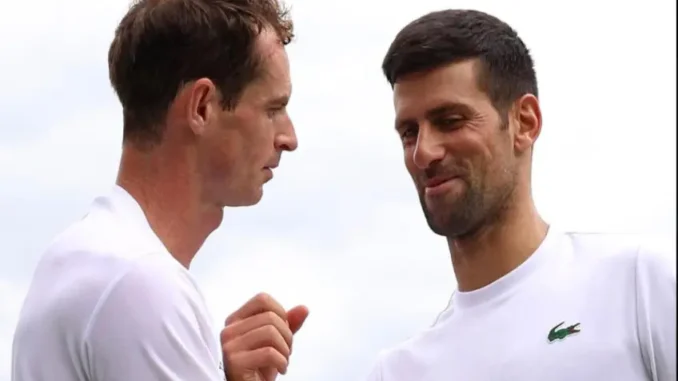
As the tennis world continues to celebrate the unparalleled dominance of Roger Federer, Rafael Nadal, and Novak Djokovic, collectively known as the Big 3, Andy Murray, the former world number one and three-time Grand Slam champion, has offered a candid and heartfelt perspective on his place among these titans. In a recent interview, the 38-year-old Scotsman, who retired from professional tennis at the end of 2024, addressed the debate over whether he belongs in a so-called Big 4, revealing a refreshing humility that underscores his legacy as a champion who thrived in the shadow of giants.
Murray, whose career spanned nearly two decades, carved out an extraordinary resume despite competing in what many consider the golden era of men’s tennis. With 46 ATP titles, including the 2012 US Open, 2013 and 2016 Wimbledon Championships, two Olympic gold medals, and a 41-week stint as world number one in 2016-17, Murray’s achievements are monumental. Yet, the Big 3—Federer with 20 Grand Slams, Nadal with 22, and Djokovic with a record 24—amassed a staggering 66 major titles between 2004 and 2023, a period when only Murray and Stan Wawrinka won more than one major outside their trio. Reflecting on the Big 3 versus Big 4 debate, Murray stated, “It’s not important. It’s not something I lose any sleep over at night. I’m fully aware that what those guys achieved is far greater than anything I’ve done. I would never claim to be on the same level as them.” His words, delivered with disarming honesty, reveal a player at peace with his legacy, even as he acknowledges the towering accomplishments of his rivals.
Murray’s journey was defined by his battles against the Big 3, facing them 85 times across his career, with a 25-11 head-to-head against Federer, 11-25 against Djokovic, and 7-17 against Nadal. His most iconic victories include the 2012 US Open final, where he outlasted Djokovic in a five-set epic, and the 2012 Olympic gold medal match, defeating Federer in straight sets on Wimbledon’s Centre Court. “It was special… and I didn’t do a good job of celebrating those good times and acknowledging the achievements and stuff,” Murray reflected, admitting he now feels pride in his career, a sentiment that grew stronger post-retirement. His 2016 season, where he won nine titles, including Wimbledon, the ATP Finals, and Olympic gold, saw him end Djokovic’s four-year reign at the ATP Finals and claim the year-end number one ranking, a feat no other player outside the Big 3 achieved between 2004 and 2022.
The Scot’s resilience was tested not only by his rivals but by physical setbacks, including a debilitating hip injury that required multiple surgeries and nearly ended his career. Despite this, Murray’s tactical brilliance—marked by a pinpoint two-handed backhand, exceptional return game, and creative shot-making—made him a formidable opponent. Rafael Nadal, a childhood rival, praised Murray’s mental fortitude, saying, “In terms of level of tennis, in terms of holding mentally the winning spirit week after week, he was the only one that was very close to being at the same level as us.” This acknowledgment from a 22-time Grand Slam champion highlights Murray’s ability to compete at the highest echelons, even if his three majors pale in comparison to the Big 3’s haul.
Murray’s self-deprecation was evident in a 2022 Instagram post from the Laver Cup, where he captioned a photo with Federer, Nadal, and Djokovic as “The big 3 + some 🤡,” a lighthearted jab at his place in their company. Yet, his peers and fans see him differently. James Gray, a sports correspondent, argued, “Despite the numbers, the fact he has beaten Djokovic in Grand Slam finals suggests to me he is good enough to be considered in that bracket.” Murray’s legacy extends beyond titles; he broke Britain’s 77-year wait for a Wimbledon men’s champion and led the nation to a 2015 Davis Cup title, re-establishing the UK as a tennis powerhouse.
As Murray transitions into a new chapter, including a brief stint coaching Djokovic in 2025 and a move into business with Redrice Ventures, his perspective on his career has softened. “I do look back and I feel proud about what I achieved. It feels like a really, really long time ago already,” he said. While the Big 3’s dominance is undeniable, Murray’s ability to challenge them, win major titles, and hold the top ranking in their era cements his status as a unique figure—a champion who didn’t just survive the golden age of tennis but left an indelible mark on it.
Leave a Reply